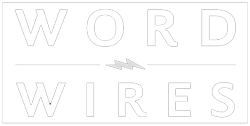Word-Wires Level Two Sample Lessons
Word Wires Level Two
The Word-Wires Two curriculum is designed for use in a Tier 1 Second Grade classroom but has an intentional overlap with Third Grade skills to allow it to be flexible based on the needs of students.
We have designed a year’s program into three units.
Unit 1: Mouth Foundation Super Fast Track
Unit 1 teaches the deep linguistic structure of the language using Mouth Cards and a Vowel Key. The pace here is meant for students who have had some exposure to the Word-Wires Mouth Cards and Vowel Key and would benefit from a quick review. This unit also sets the tone for using the placement of sounds in your mouth to read and spell and creates a class culture around exploring the sounds of words.
Unit 2: Phonics and Morphology for Reading
Unit 2 is designed to teach and/or review phonetic concepts with an emphasis on reading. To make this meaningful for all second grade students, we immediately introduce multi-syllable words and the strategies of Vowel Yanking and Strip the Fix so that students are able to review phonetic patterns in the context of reading longer words. By first pacing our instruction to reading, we are able to move quickly through all the common vowel patterns so that students are able to apply these concepts to reading leveled text. While we may use writing to help develop concepts, letting the hand inform the mind’s eye, our goal here is for students to break down multisyllable words to read them; we teach and practice phonics concepts with an emphasis on spelling in Unit 3.
Unit 3: Phonics, Morphology, and Sketchpad Words for Spelling
Unit 3 revisits common phonetic concepts with the goal of spelling in mind. The pace of the program changes to a weekly routine, where sight words are introduced on Monday, a phonics concept and word-level practice is covered on Tuesday, the concept is applied to phrases and often a prefix or suffix is introduced or reviewed on Wednesday, the concept and Sketchpad words are applied to Safe Sentences on Thursday, and skills are assessed on Friday. High-frequency sight words are grouped to enable students to make connections between letter and meaning patterns whenever possible. Our emphasis on moving phonics concepts from the word to the phrase to the sentence facilitates the transfer and application of spelling skills to students’ own writing. Additionally, our spelling program is cumulative and recursive; once a phonics pattern or sight word is taught, it is frequently reviewed.
We consistently found that if we paced classroom reading instruction for reading and spelling simultaneously, we moved too slowly for students to be practicing effective decoding strategies when reading leveled text. In other words, the need to slow down for spelling holds back the pace required for reading. At the same time we recognize that working on spelling while teaching decoding helps develop decoding skills. Our solution, which has been effective in our experience, is to move through phonetic and morphological concepts twice. The first time, move at a quicker pace, with a focus on reading using spelling to cement concepts. In the second pass, shift the emphasis to spelling as well as transferring and applying spelling concepts to independent writing. During the second pass, the goal becomes the transfer and application of phonetic and morphological concepts to writing.
- Reviews Linguistic-based Mouthy Fast Track
- Explores common syllable types using multi-syllable words
- Weaves prefix and suffix meanings with phonics concepts for spelling words, phrases, and sentences
- Recommends a differentiated scope and sequence for teaching non-phonic words

